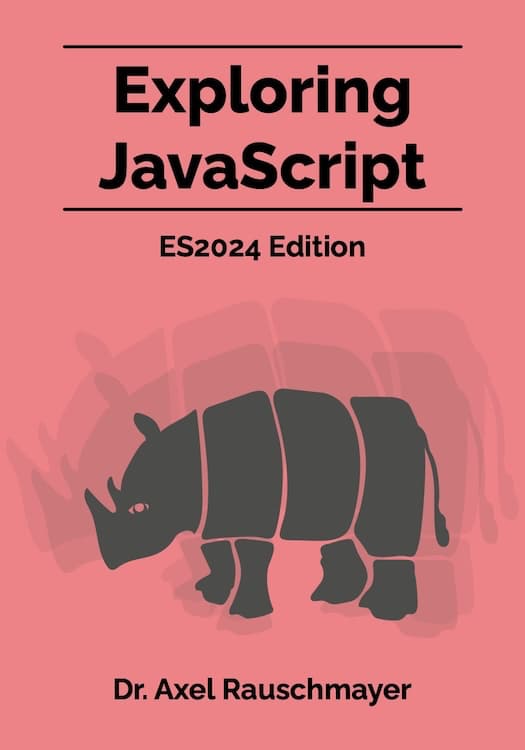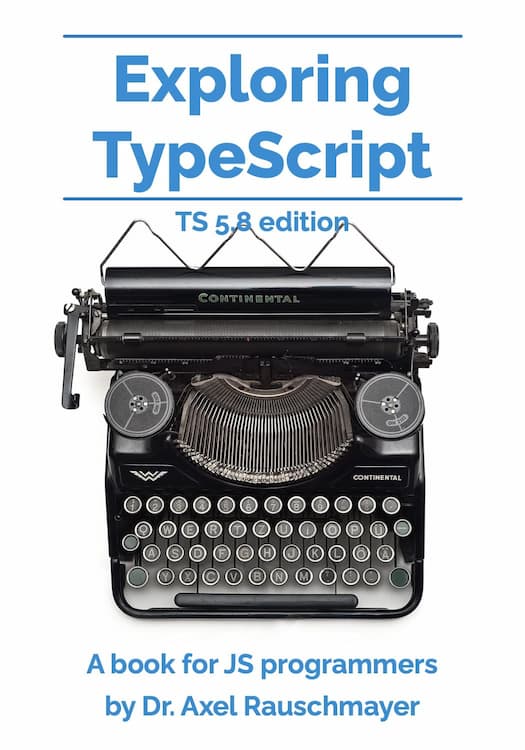Array type notations: T[] vs. Array<T> in TypeScript
In this blog post, we explore two equivalent notations for Arrays in TypeScript: T[] and Array<T>. I prefer the latter and will explain why.
T[] vs. Array<T>
In TypeScript, there are two notations for an Array of strings:
string[]Array<string>
Both notations are equivalent.
Why are there two notations? Why does TypeScript prefer T[]?
Why are there two notations?
- TypeScript 0.9 introduced generics to the language and enabled the notation
Array<T>. - Before that,
T[]was the only notation for Arrays.
So it looks like TypeScript simply stuck with the status quo when version 0.9 came along: It still exclusively uses T[] – e.g., when inferring types or even when displaying a type that was written Array<T>.
Even though I have read once or twice that JSX is the cause of TypeScript’s preference, I don’t think that’s the case:
-
The
Array<T>notation is compatible with JSX: It only exists at the type level and can be used without any problems in.jsxfiles. -
JSX does, however, make one syntax impossible to use – type assertions via angle brackets:
// Not possible in .tsx files: const value1 = <DesiredType>valueWithWrongType; // Can be used everywhere: const value2 = valueWithWrongType as DesiredType;
Why I prefer the notation Array<T>
I find it often looks better – especially if constructs related to element types get more complicated:
// Array of tuples
type AT1 = Array<[string, number]>;
type AT2 = [string, number][];
// Array of union elements
type AU1 = Array<number | string>;
type AU2 = (number | string)[];
// Inferring type variables
type ExtractElem1<A> = A extends Array<infer Elem> ? Elem : never;
type ExtractElem2<A> = A extends (infer Elem)[] ? Elem : never;
// Readonly types
type RO1 = ReadonlyArray<unknown>;
type RO2 = readonly unknown[];
// `readonly` applies to `[]` not to `unknown`!
More reasons:
Array<T>looks similar toSet<T>andMap<K,V>.T[]can be confused with[T](tuples that have a single component whose type isT) – especially by people new to TypeScript.- If we want to create an empty Array without a type annotation then that syntax is more consistent with the angle bracket type notation:
const strArr = new Array<string>();
One point in favor of T[]
Because TypeScript always uses T[], code that uses that notation is more consistent with language tooling.
Syntactic caveat: The [] in T[] binds strongly
The square brackets in T[] bind strongly. Therefore, we need to parenthesize any type T that consists of more than a single token – e.g. (line A, line B):
type ArrayOfStringOrNumber = (string | number)[]; // (A)
const Activation = {
Active: 'Active',
Inactive: 'Inactive',
} as const;
type ActivationKeys = (keyof typeof Activation)[]; // (B)
// ("Active" | "Inactive")[]
Linting Array notations
typescript-eslint has the rule array-type for enforcing a consistent Array notation style. The options are:
- Always
T[] - Always
Array<T> T[]for single-tokenT; otherwiseArray<T>





